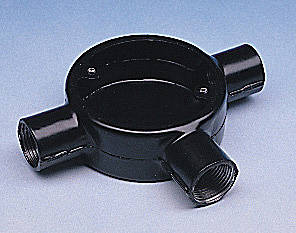Hi,
I am attempting to extend my ring main to add an additional double socket. However, the cable in my house is encased in steel conduit pipe (prob 20mm). The pipe only contains the live and neutral cores (2 sets of red/black for the ring, no earth, and the whole lot is NOT encased in flex apart from the red and black core flex of course).
Are there any regs that say i cant cut into the steel conduit? Whats the best setup to extend from it? I cant seem to find any junction boxes that connect to steel conduit and have, say, 3 terminals inside.
Am i ok to just remove a section of pipe, cut 1 set of cores, and then run each end to 2 JBs, then extend from those JBs to the new socket and back?
Thanks
I am attempting to extend my ring main to add an additional double socket. However, the cable in my house is encased in steel conduit pipe (prob 20mm). The pipe only contains the live and neutral cores (2 sets of red/black for the ring, no earth, and the whole lot is NOT encased in flex apart from the red and black core flex of course).
Are there any regs that say i cant cut into the steel conduit? Whats the best setup to extend from it? I cant seem to find any junction boxes that connect to steel conduit and have, say, 3 terminals inside.
Am i ok to just remove a section of pipe, cut 1 set of cores, and then run each end to 2 JBs, then extend from those JBs to the new socket and back?
Thanks


